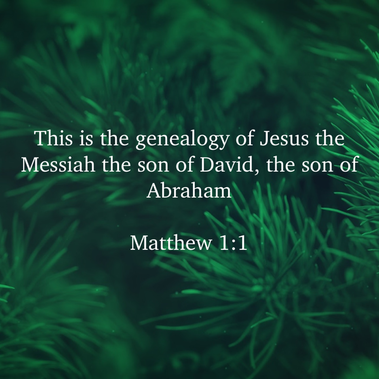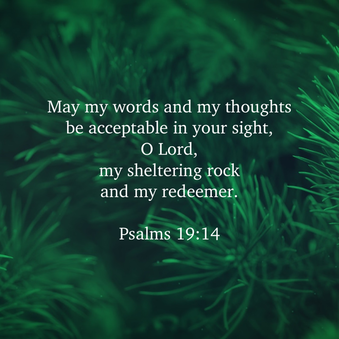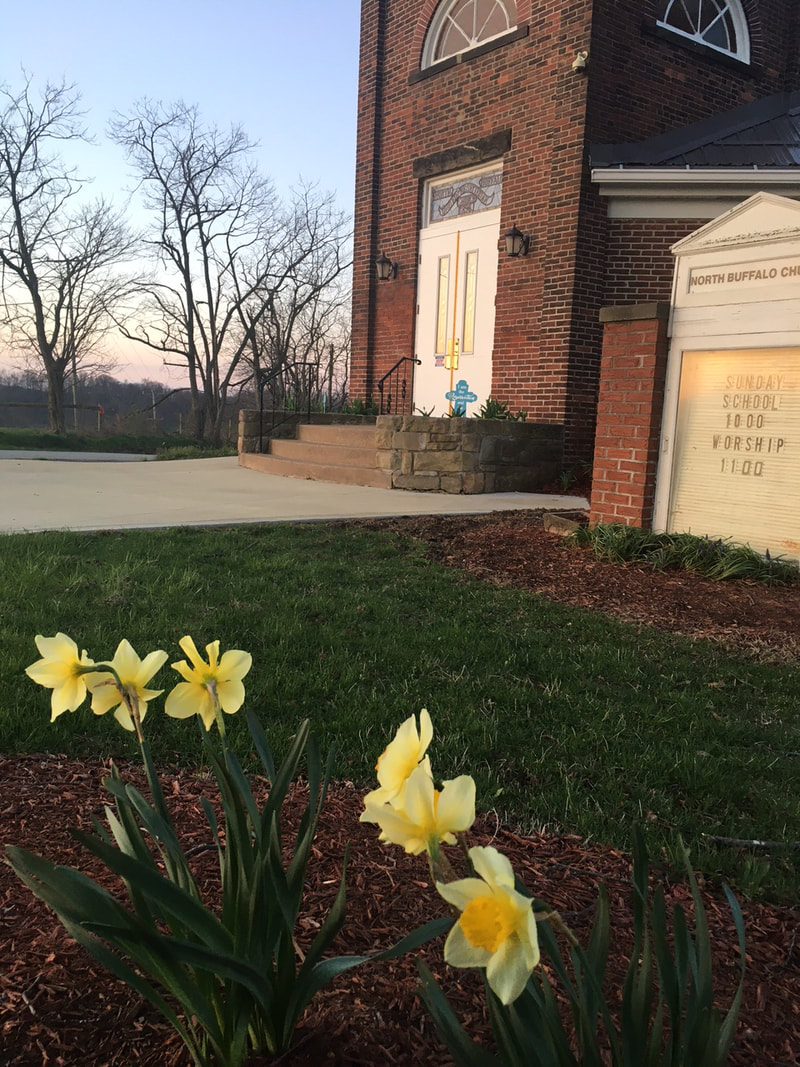|
Good morning!
We're so glad you decided to join us!
Today is the third Sunday of Advent.
When we meet in person, we share our joys and concerns. Take some time to consider the past week, and any prayer requests you might have. When you are ready, use the prayer below (source) to get started.
Lord Jesus,
Master of both the light and the darkness, send your Holy Spirit upon our preparations for Christmas. We who have so much to do and seek quiet spaces to hear your voice each day, We who are anxious over many things look forward to your coming among us. We who are blessed in so many ways long for the complete joy of your kingdom. We whose hearts are heavy seek the joy of your presence. We are your people, walking in darkness, yet seeking the light. To you we say, "Come Lord Jesus!' Amen.
Today's lesson is on Matthew 1:1-17.
Lesson Context
The Gospel of Matthew was written primarily for a Jewish-Christian audience somewhere between about 50 - 100 AD. The author emphasized connections between Jesus' life and Old Testament writings as a way to show that Jesus was the long-awaited Messiah. Our book briefly points out that the genealogy in Matthew and the genealogy given in Luke 3:23-28 do not match up. There are different names, different numbers of generations, different organizational structures and they go back to different people. Each writer had a different purpose in mind for their rendition of Jesus' family history. Matthew's primary purpose in writing his Gospel was to reveal who Jesus the Messiah is and why his life is significant. The Hebrew word for Messiah (which can be translated with the Greek word for Christ) means "anointed one" and referred at various times to both priests and kings. At some point after the fall of David's royal line, it came to refer to the anticipated savior of the Jewish people. Because the audience of this gospel was Jewish, the connection to Abraham and David would have ben important. The audience knew the promises made to both of those men. How Jesus fulfilled these promises would take the rest of the gospel to answer.
From Abraham to David (verses 1-6)
This first chunk of the genealogy covers approximately 1,100 years. Abraham was chosen by God, and was promised that, "all peoples on earth will be blessed through you," (Genesis 12:3). Isaac was the miracle baby, born to Abraham and Sarah in their old age (Genesis 21:1-7). Jacob was Isaac's second son, who stole his brother Esau's birthright (Genesis 27). Later, Jacob was renamed Israel after wrestling with God. (Genesis 32:22-31). Jacob and his wives had twelve sons, who were the ancestors of the twelve tribes of Israel (Genesis 35:22-26). Matthew's genealogy goes through one of the younger brothers, Judah. In a change of pattern, the next generation's mother, Tamar, is also mentioned. It is assumed that Tamar was a Canaanite woman. She was married to one of Judah's sons, but he died before they had any children. At that time, one of her husband's brothers would have married her in order to provide the deceased brother with an heir. This did not happen. Instead, Tamar devised a plan to become pregnant by Judah himself. She gave birth to twin boys, Perez and Zerah. The family then went to Egypt during the famine in Canaan. They stayed there until the exodus. Amminadab and Nahshon are both associated with the 40 year period of wandering in the wilderness. Salmon represents the first generation that was tasked with conquering Canaan in the days of Joshua. We then encounter the next woman within the genealogy, Rahab. Rahab was the Canaanite prostitute who helped the Israelites conquer Jericho (Joshua 6:25). Rahab and Salmon had a son named Boaz. The story of Boaz and Ruth takes up the first four chapters of the book of Ruth. It was also the first lesson of this quarter. Ruth was a Gentile, the third to be named in this passage. The two had a son named Obed. His son was Jesse. Jesse originally offered his older sons as candidates for king. But the Lord chose Jesse's youngest son, David instead (1 Samuel 16:1-13). Matthew calls him King David, emphasizing the promise that David's throne would be established forever.
From David to Exile (verses 6 - 11)
The middle portion of the genealogy covers about 400 years. It starts with King David, and then his son, Solomon. Our book points out that Solomon's mother was referred to as Uriah's wife instead of by her name, Bathsheba. It suggests that this has a couple of purposes. One is to highlight that she was likely a Hittite, as was Uriah. It also emphasizes her first marriage that was destroyed after David called her to his house. Reminding the reader of David's grave sins serves to temper any hero worship that the king's status -- especially having been handpicked by God and received incredible blessings from him -- might otherwise inspire. Solomon was the last king of the united monarchy of Israel, in large part due to his own faithlessness later in his reign (1 Kings 11:9-13). From there, King Rehoboam and his successors of the southern kingdom of Judah in Jerusalem are listed. Some of these kings were righteous, and some were not. There are a few notes on the list of kings. Assyria conquered Israel during the reign of Hezekiah in 722 BC. Judah's survival of that crisis is attributed in part to Hezekiah's continued faithfulness to the Lord (2 Kings 19:14-36). Josiah was credited with reinstituting the worship of the Lord and teaching the book of the law (2 Chronicles 34). At the end of this section, we have wicked King Jeconiah. He and his brothers were exiled in the first wave to captives to Babylon. Jerusalem and the temple were destroyed in the final Babylonian siege in 586 BC (2 Kings 24:18-16). The exile marks the end of this portion of the genealogy.
From Exile to Christ (verses 12 - 17)
The last portion of the genealogy takes a little under 600 years, starting from the low point of the Babylonian exile. The next men, Shealtiel and Zerubbabel, represent the 70 years in captivity. After Babylon was conquered by Cyrus of Persia, the people of Judah were allowed to return to Jerusalem in 538 BC. Zerubbabel was instrumental in rebuilding the temple in Jerusalem. With Zerubbabel, the Old Testament account of the kingly line ends. The last men listed, up until Joseph, come from a source unknown to us. Nothing is known about the lives of the men from the rebuilding of the temple to Jesus' adoptive father, Joseph. As a side note, Joseph's father does not match between this genealogy and that of Luke. The end of the genealogy is carefully worded. Joseph is the husband of Mary, not a biological relative of Jesus. Jesus' belonging in Joseph's family was a matter of choice, like adoption, instead of natural heritage. Mary is the only woman in the genealogy who was not a Gentile. She accepted God's plan for her with faith and humility, demonstrating why he chose her to raise Jesus. Calling Jesus the Messiah bookends the genealogy. Numbering fourteen generations in each section of the genealogy is an organizational tool that emphasizes the roles of Abraham, David and the exile as formative people/events in Israel's history. The summary serves to emphasize the fulfillment of God's promises.
Conclusion
Showing all of the different people, with all of their different backgrounds and problems, shows us something about God. The people listed in Jesus' genealogy were both men and women, Jews and Gentiles, righteous and wicked. All of them were imperfect people. But God used them to accomplish his perfect plans.
Prayer
Lord God, may we be reminded that you use all sorts of people to accomplish your will. May you use us, in spite of our sins and weaknesses. In Jesus' name we pray. Amen.
Questions for Discussion
Benediction
This week's benediction is from the New English Translation.
Next week's lesson will be on Luke 1:36-45, 56.
0 Comments
Leave a Reply. |
AuthorWe are a small, rural Presbyterian church in southwestern Pennsylvania. Archives
July 2024
Categories
All
|



 RSS Feed
RSS Feed